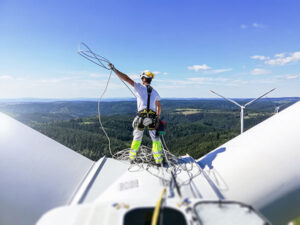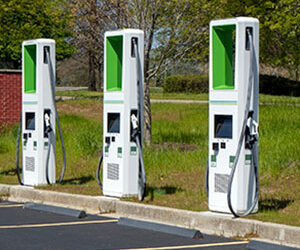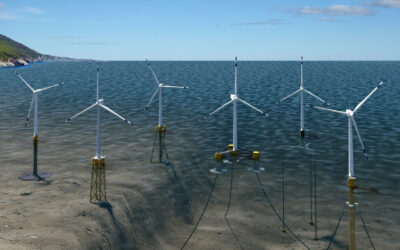Blockchain and artificial intelligence. Green hydrogen. Electric vehicles. Advanced solar, wind and hydro power. Next-gen nuclear. Smart everything and batteries everywhere. These technologies and many more are driving the American energy industry toward a future few imagined even a decade ago.
The result is even cleaner and more-reliable energy. The network managing it will be nimble and responsive to customer needs. The changes also are bringing jobs that require skills ranging from engineering, construction, and customer experience to finance, cyber security, and environmental science.
 The need is there. Even as advances in efficiency and conservation continue, energy use in the United States is expected to increase. At the same time, customer expectations are changing. Price and reliability are still important, but so are impacts on the community and environment as well as wanting more control.
The need is there. Even as advances in efficiency and conservation continue, energy use in the United States is expected to increase. At the same time, customer expectations are changing. Price and reliability are still important, but so are impacts on the community and environment as well as wanting more control.
Enter technology.
One of the industry’s biggest tech trends is the growth of renewable energy. Renewables’ share of U.S. electricity production has grown exponentially in recent years, topping 20 percent in 2020. It is expected to more than double again by 2050, making it the nation’s largest source of electricity.
Diversity is key, according to Heidi Tinnesand, a researcher at the National Renewable Energy Laboratory. Diversity in technologies, energy sources, and people.
“We can’t go all solar. We can’t go all wind,” Tinnesand said. “It’s going to be a highly diverse approach and we are going to need a more-diverse workforce.”
Advances in solar technologies have improved power production and dropped costs dramatically. From a nascent industry a decade ago, universal solar power plants and private rooftop solar arrays are springing up daily.

Wind power, however, remains the country’s largest renewable energy source, thanks in part to its own breakthroughs. New composite materials and advanced structural designs are promoting bigger, more-efficient turbines. Other technologies are opening deep ocean waters for floating wind farms that can benefit from better wind conditions.
Advances in battery technology also are contributing to the growth in renewables, storing energy for when the wind doesn’t blow and sun doesn’t shine.
Not to be left out is nuclear, still the nation’s largest producer of carbon-free energy. A new generation of nuclear reactors is being developed, often smaller and simpler in design to address issues of cost and location.
In the natural gas business, two tech trends are helping the industry move in the green direction.
Production of biogas – made from organic matter such as animal waste – is ramping up. Technology improvements are helping to purify the gas and increase output. Biogas is blended with natural gas or used on its own for industry, power generation, heating, and vehicle fuel.
 Some see an even bigger opportunity for renewable or green hydrogen. Hydrogen is a clean fuel, producing only heat and water vapor. The problem has been getting enough hydrogen. Now, by using carbon-free energy to separate hydrogen from water, it creates a powerful chemical “battery” to support homes, businesses, and transportation.
Some see an even bigger opportunity for renewable or green hydrogen. Hydrogen is a clean fuel, producing only heat and water vapor. The problem has been getting enough hydrogen. Now, by using carbon-free energy to separate hydrogen from water, it creates a powerful chemical “battery” to support homes, businesses, and transportation.
One clear trend is that energy and information are inextricably linked. The growing complexity of interconnected energy producers and users demands new information solutions.
To meet that challenge, energy companies are turning to artificial intelligence, machine learning, gamification techniques, and “big data” harvested from smart meters and other internet-connected devices (aka the Internet of Things). They are being used to improve customer service and demand forecasts and drive efficiency.
Blockchain, the secured digital recordkeeping technology, also is impacting the energy industry. Some value it for its increased data security. Others are experimenting with it to incentivize customers to charge their electric vehicles during off hours. More uses are on the horizon.
Energy and technology – a shared future.




